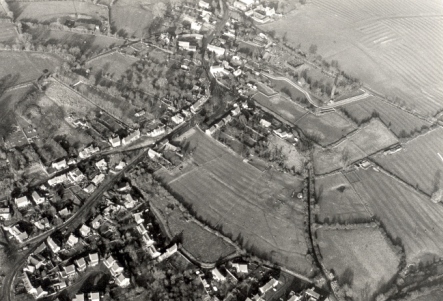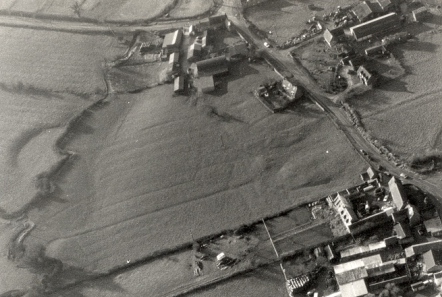Medieval and Post - Medieval Napton

An interpretation of what a Medieval settlement may have looked like
© Worcestershire County Council
Artwork by Steve Rigby
By looking at maps from various periods of time, we can see that the medieval settlement was a similar size to the present town. We can also see that the medieval settlement extended further north and south than the present day town. Evidence for the settlement can be seen on aerial photographs with house platforms and field boundaries clearly visible as earthworks.

SP4661/B
© Warwickshire Museum
Associated artefacts found in the area of the medieval settlement include fragments of a glass bottle, a silver penny, a needle and spinal whorls. All indicating domestic activity.
It is believed that Napton was primarily a medieval town. Its most significant feature is the church of St. Laurence, built in the 12th century and still in use today. Additional features, such as an aisle and vestry, were added from the 13th century onwards. It was restored during the post - Medieval period, with a tower being added in the Imperial Period. Undated burials were found during an archaeological evaluation, as well as a small amount of pottery which is believed to have come from the nearby settlement, dating to the post - Medieval period. There is reference in the Doomsday book to a priest in Napton as early as 1086, which suggests that there was a church or chapel present at this time.

SP4660/E
© Warwickshire Museum
It is also believed that there was at least one large estate with a house in Napton at this time, possibly owned by John Odams, who held a licence for the original chapel in 1392 - 3, which allowed him to practise holy services there.

